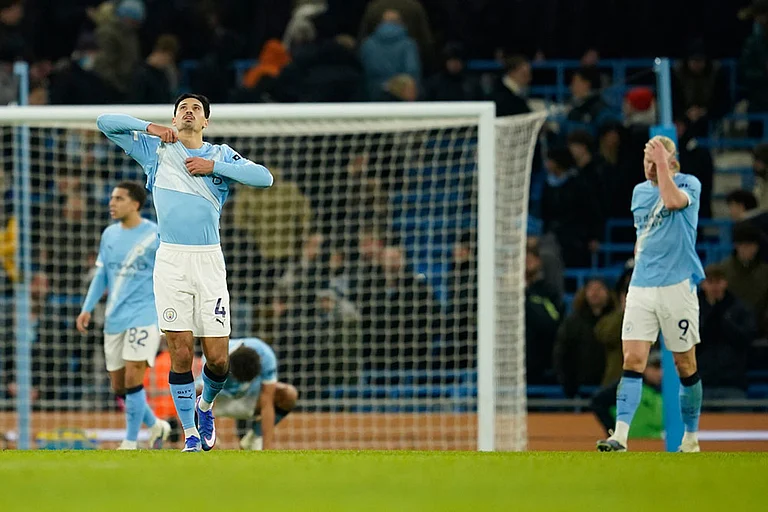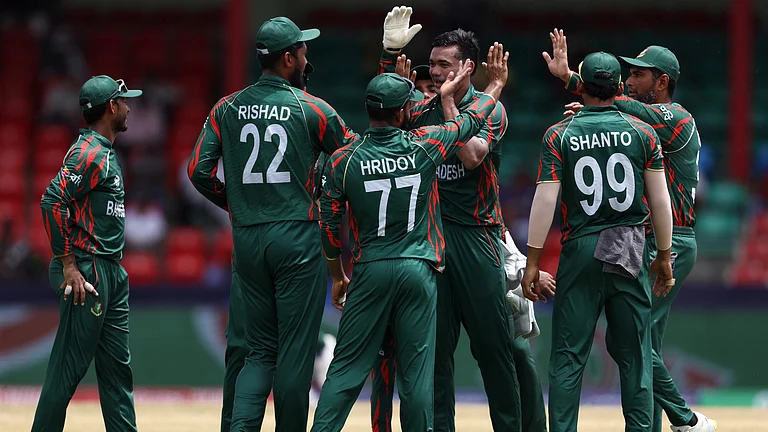Two months after Prime Minister Narendra Modi returned from a state visit to the United States, he shared the stage with Chinese President Xi Jinping at the BRICS Summit and welcomed the expansion of BRICS — seen in the West as China-led anti-West front. Weeks later, New Delhi is now hosting the G20 Summit and Xi is skipping it in snub to the host India.
These developments within just a few months are telltale of complexities of the current world order. On the surface, India’s support for the expansion of BRICS appears to be at odds with India’s membership of Quad or its embrace of the United States, but that’s not the case. From BRICS to Quad and Group of 20 (G-20), India’s engagement with multilateral organisations is being driven by a realist foreign policy that seeks to carefully navigate the rival blocs and secure its own interests.
As the saying goes, there are no permanent friends or permanent enemies in international relations — only permanent interests.
The great juggling act
It’s not unusual for countries to be a member of multiple groupings, but the situation of India is unique. India is a member of the Quad and is commited to the free and open Indo-Pacific region where the group counters Chinese hegemonic designs. Then, India is a member of the China-led Shanghai Cooperation Organisation (SCO) and BRICS. Then, there is India’s championing of the issues of the Global South — the developing world.
In a world that has set into bipolar competition yet again —China being the competing power this time against the United States— India through its many multilateral engagements is seeking to secure its interests. But whose side is India on? India is understandably on India’s side.
While India takes stands on issues —instead of sides— it’s clear that the country is much more aligned with the West despite the promotion of BRICS and SCO.
“Since 1991, India’s choice has been clear. Indian interests are much more closely aligned with the West and the United States whether it’s in terms of democratic values, finance, or geopolitics. The joint statement after the meeting between Modi and Biden yesterday was so expansive and that gives you the idea of the India-US ties. The convergences of India and the United States are so vast and cover almost every sector. So, as far as what choice India has made, it’s clear,” says Manish Dabhade, Assistant Professor, Centre for International Politics, Organisation & Disarmament, School of International Studies, Jawaharlal Nehru University (JNU).
As for the various multilateral groupings, India’s engagements with each of them has particular objectives. The Western concerns are also somewhat misplaced as the BRICS expansion does not make the grouping anti-Western.
The expansion actually brings BRICS closer to the West, says Tej Pratap Singh, Professor, Department of Political Science, Benaras Hindu University (BHU).
Singh tells Outlook, “Among the new members, Iran is certainly adversarial to the United States, but the UAE and Saudi Arabia are strongly pro-USA. With India also in the grouping, which has great relationships with both of these countries, neither the grouping nor its expansion is anti-West. If forced into making a choice, these countries would choose the United States any day over China.”
Singh further says that Indian engagement with the BRICS is primarily economic and it’s involvement at China-led SCO is also not that simple.
“India joined SCO at the behest of Russia where Russia brought India to counterbalance China. While China and Russia are close, Russia is concerned about China becoming too powerful and Russia becoming too dependant on China. So, the deal was that Russia brought India into SCO and China brought in Pakistan into SCO to counterbalance India,” says Singh, adding that while SCO and BRICS are definitely China-promoted, they are not necessarily China-controlled as India is a major power in these blocs and now BRICS also has UAE and Saudis.
The C-factor in Indian engagements
From the Indo-Pacific region to the Indian engagement in Africa, there is one common factor that’s defining Indian diplomacy — the China factor.
The Quad members India, Australia, United States, and Japan never mention China by name but the facts on the ground are for everyone to see. The Quad is committed to keeping the Indo-Pacific free and open — from whom? It’s clear. The region has to remain free from Chinese hegemonic designs that’s emerging as the primary force in the region.
Similarly, while India’s leadership of the developing world —referred to increasingly as the Global South— is part of the longheld view of Indian primacy among these countries, the China factor is present there as well. Through projects like the Belt and Road Initiative (BRI), China has reached out to large parts of Africa which India is now countering. The inclusion of the African Union (AU) into G20 in India’s presidency is a major achievement on that front.
India has been calling for the greater integration of the Global South at the world stage and has championed the G20 membership of the AU to give more voice to the developing world in multilateral platforms, says Dabhade of JNU, adding that this also counters China in Africa.
“Leading the developing world is key to Indian foreign policy and interests. The inclusion of AU in G20 in India’s presidency and other initiatives of India in Africa and elsewhere also counter China’s engagement in Africa and developing countries everywhere. China has an active presence in Africa with Belt and Road Initiative (BRI) and Indian initiatives and G20 membership provide Africa an alternative and give the region a voice at the world stage that China does not give. That way, the AU membership of G20 is important and in line with Indian engagement with the Global South,” said Dabhade, also the founder of the think tank India Futures.
While the who’s who of the world are in Delhi for G20 Summit, China’s Xi Jinping is not. The absence has not gone unnoticed. The consensus is that it’s a snub for India. In doing so, however, Xi also unwittingly paved the way for Prime Minister Narendra Modi and archrival US President Joe Biden to steal all the thunder.
Singh of BHU says that “India and China are like two lions in the same forest” and they cannot be at peace with each other. While he acknowledges that China is much ahead of India in terms of economy and military and does not see India as an equal, he says that India is definitely the only regional rival it has and Xi is therefore not okay with India’s rising profile.
Singh tells Outlook, “China has always been prejudiced and dismissive regarding India. China has tried to undermine the G20 presidency of India at every step. It skipped working group meetings and criticised the slogan of ‘Vasudhaiva Kutumbakam’. This is the first time that Xi has skipped the G20 Summit and India is the reason for that. China also realises that while India did not promote the China-led SCO’s presidency and only held a virtual summit of SCO, India has held G20 with such pomp and show and has treated G20 with the respect it never gave to SCO.”
India carves its own way
While it’s clear that China is the biggest strategic adversary of India and India is much more aligned with the United States and the West, which is natural for a country in India’s position, it’s also clear that India is not part of any bloc and is charting out a unique course for itself in world affairs.
Indian actions continue to be driven by the longheld concept of ‘strategic autonomy’. The concept has at times been criticised for being too vague or a cliched at times, but the basic idea of India retaining the autonomy —or relative autonomy— to take stands on issues and chart out a course for itself without joining any bandwagon remains true.
Experts caution that strategic autonomy is not Non-Aligned Movement (NAM) 2.0. Between China-Russia and Western blocs, India has made its choices — Dabhade of JNU says the choice has been clear since 1991 when India liberalised its economy. While being aligned with the United States and the West, New Delhi continues to look for its own interests and the West appears to understand it. The act of looking out for own interests would mean divergences at times but those divergences are minor compared to the extent of convergences.
Singh of BHU says India considers itself a great power and the commitment to strategic autonomy puts limits on its alignment with any side.
Dabhade of JNU says that India would ideally prefer a multipolar world but the reality is that we are now in a bipolar contest and India has to navigate this world order accordingly.
“In the emerging bipolarity between China and the United States, India has a very close alignment with the US-led Western world, but that does not mean jumping in its wagon. While aligned closely, India continues to chart its own course much like the French who are also committed to strategic autonomy and while they are part of the Western bloc, they are not 100 per cent followers of the US policy,” says Dabhade.


























